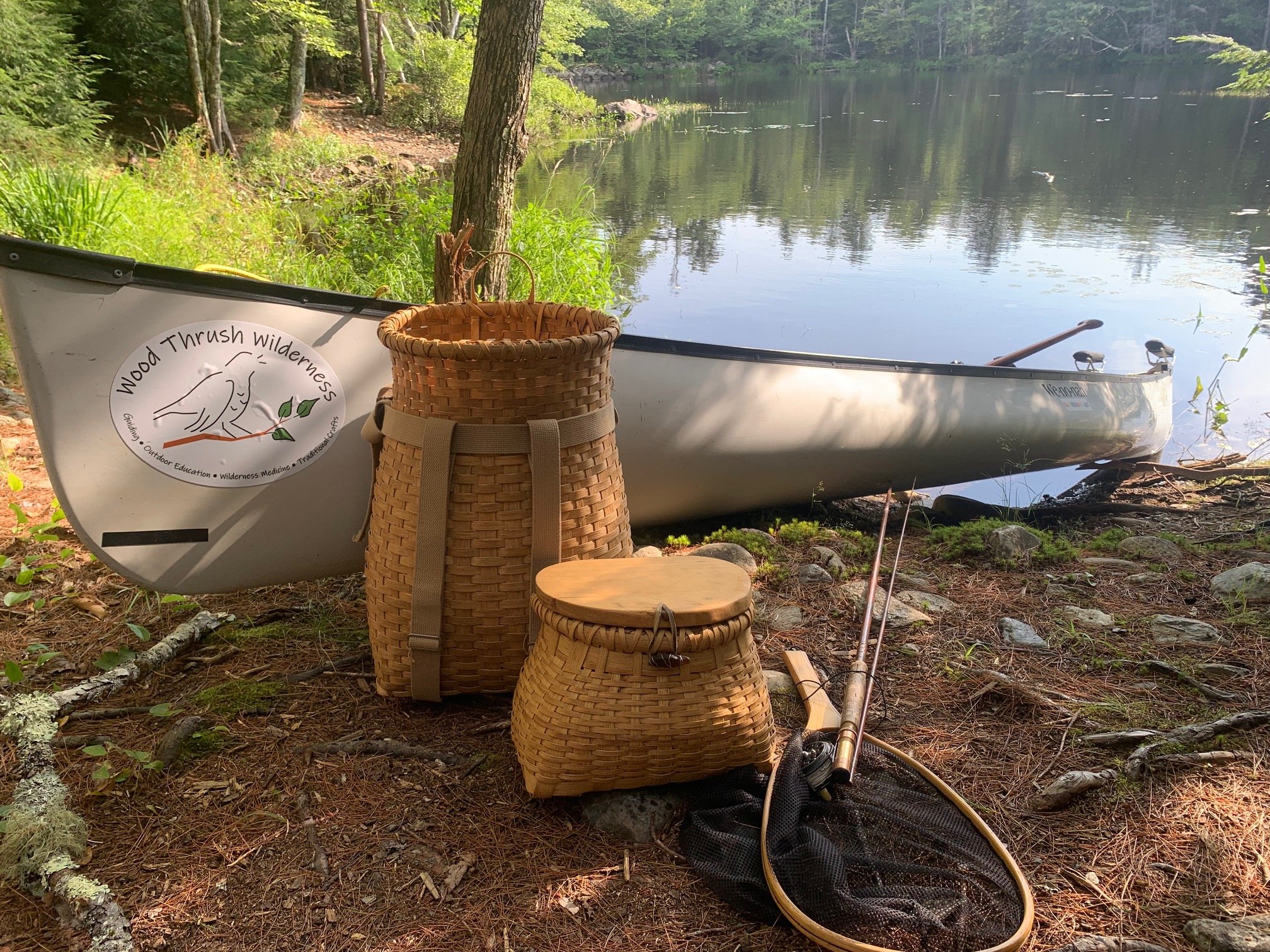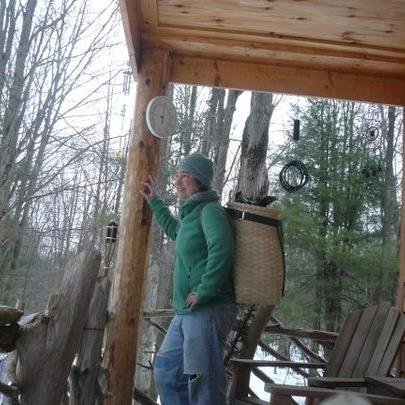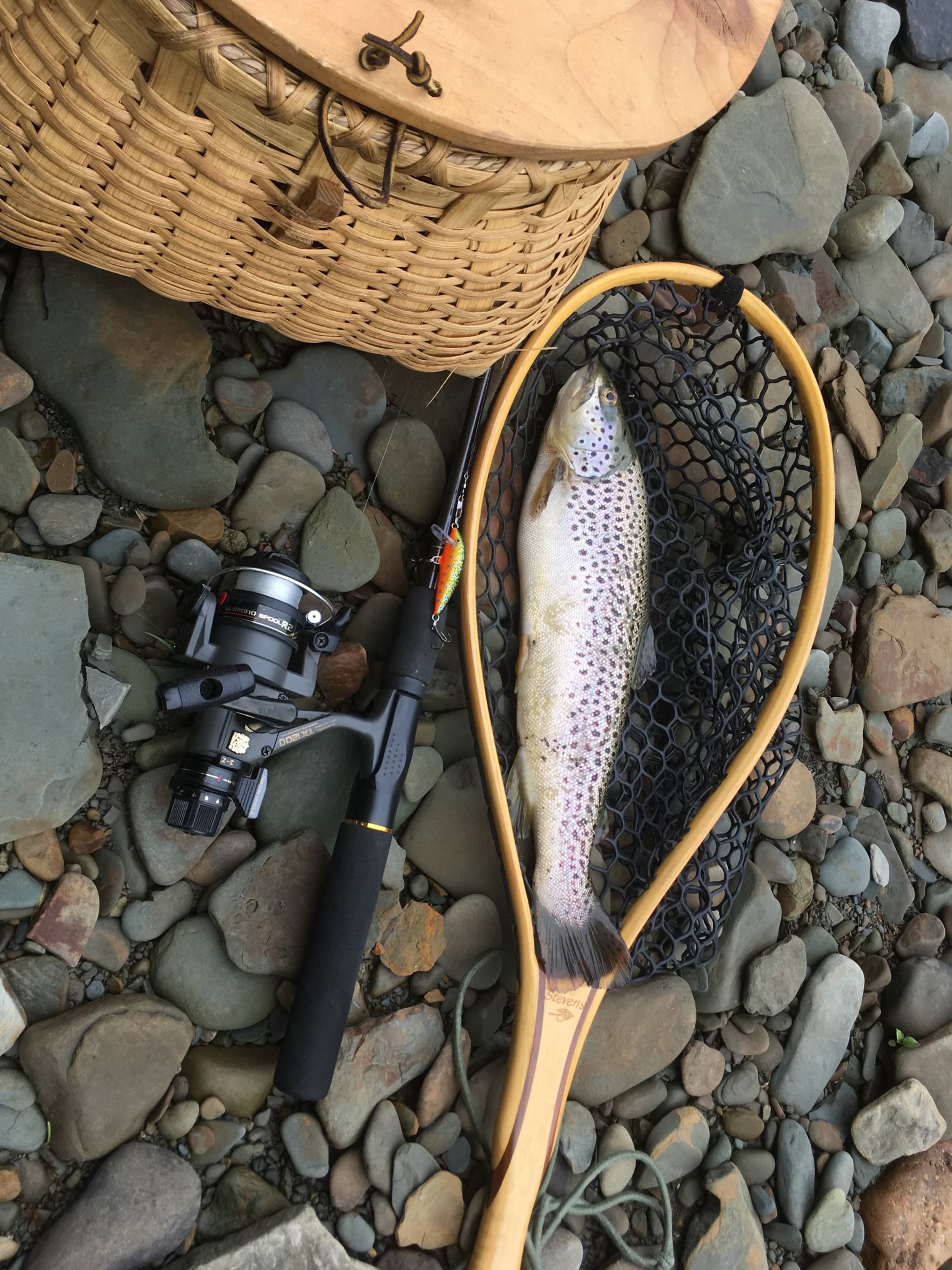My History with Baskets Making
Many people have approached me, expressing curiosity about my weaving skills and how I acquired them. The journey into the world of weaving began during my youth, gradually progressing from simpler materials like paper and fabric to incorporating a diverse range of wild elements into my craft. When I was a young girl, I eagerly anticipated each summer as it meant heading off to a residential girl’s camp surrounded by woods. This child’s summer holiday became the backdrop for some of my fondest memories, especially the ritual of carrying pack baskets filled with food and drinks to our campfires. It was during those carefree days that my love for the pack basket first took root, laying the foundation for a deep passion for the art of crafting baskets.
Mick Jarvis with Adirondack Baskets and Heritage Design was hosting an engaging and hands-on Pack Basket class in the town of Chateaugay, NY. Nestled in the northwest region of the Adirondack State Park, this class proved to be an amazing experience. From the moment I began my journey of creating my own pack basket, I found myself captivated by each step of the process. Over time, I would continue to improve my basketry skills.
It has been almost 14 years since I first began sharing my passion for weaving pack baskets. Over this time, I have had the privilege of instructing hundreds of eager students in the art of creating beautifully crafted baskets. My courses have been carefully designed to provide a solid foundation for developing their skills and unleash their creativity in this craft.
In every class that I lead, I always begin by affirming to my students, “Today, you are on the path to acquiring a lifelong skill.” Regardless of their current proficiency level, my commitment remains unwavering: every individual will leave with a comprehensive set of knowledge and tools, even if it means extending our session. I am wholeheartedly devoted to both the craft and the success of each and every student.
History of the Pack Basket
The history of basket making is rich and as we look throughout the world, we see evidence of baskets and pack baskets in all cultures. The history of pack baskets extends far into the past, with archeological findings tracing back Native American usage to as early as 900 B.C (1). These baskets were crucial for transporting essential fishing and hunting gear, serving as invaluable tools for survival and resourcefulness in ancient times.
Many Native American tribes across North America, such as the Iroquois, Algonquian, and others, utilized pack baskets in their daily lives. These baskets were traditionally woven from natural materials like ash splints, sweetgrass, or other sturdy plant fibers. These baskets were not only functional but also deeply connected to cultural practices and daily life. The act of basket weaving was and still is more than just a craft, it is a spiritual tradition that connects them to their ancestors and their land (2).
Pack basket tradition was kept alive by skilled basket makers who passed down their knowledge and techniques through generations. In the 16th and 17th centuries French explorers brought similar carrying baskets with them. The pack basket design we recognize today is supposedly from the interweaving of both Native American and French cultures (1).
When we look back a few hundred years ago, Pack baskets had a rich history in the northeast, particularly among the outdoor enthusiasts, hunters, and loggers. These sturdy baskets were traditionally used for carrying provisions, gear, and game while navigating the rugged terrain of Northeast forests and wilderness areas. Pack baskets were used for their durability, capacity, and comfort, making them essential equipment for anyone venturing into the wilderness.
Today, pack basket making continues as a traditional craft, with artisans producing high-quality baskets for both practical and decorative purposes. Additionally, there is a growing interest in preserving and documenting the history of pack baskets and other baskets that stems from the cultural heritage of the Indigenous cultures from the Northeast United States (3)
Here in Maine, we are on the lands of indigenous people of the Wabanaki Confederacy: the Penobscot, Passamaquoddy, Maliseet, and Mi'kmaq peoples. There are many highly skilled indigenous basket weavers. The Maine Indian Basketmakers Alliance is a wonderful resource for beautiful traditional ash and sweetgrass-woven baskets. The Wabanaki Winter Market, which is hosted annually at the UMaine Collins Center for the Arts, features many Wabanaki artists, and offers a chance to purchase their art.
(1) Hamilton College (Website) Folk and Outsider Art in the Adirondacks
(2) Native Tribe Info: A Journey through the World of Native Tribes (Website) Passamaquoddy Basket Weaving: Rich Traditions and Techniques. Text (c) 2023 Justo
(3) University of Maine Hudson Museum (Website) Maine Basketry Activities to Support Teaching of Maine Native American History and Culture. Text (c)





